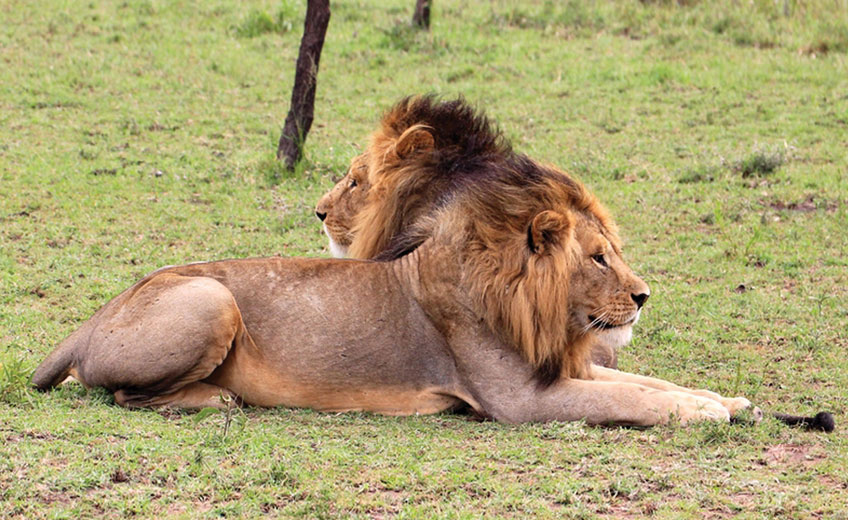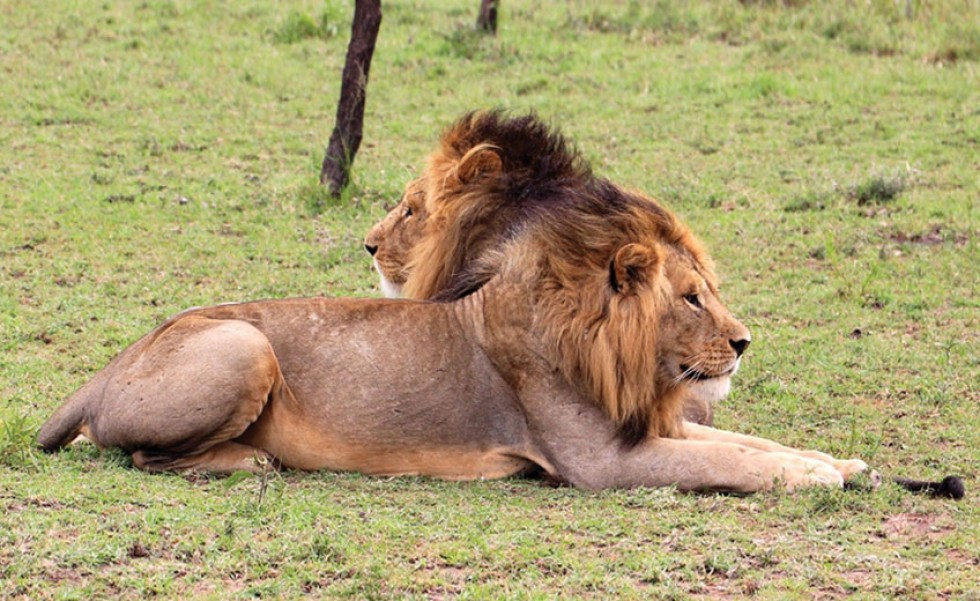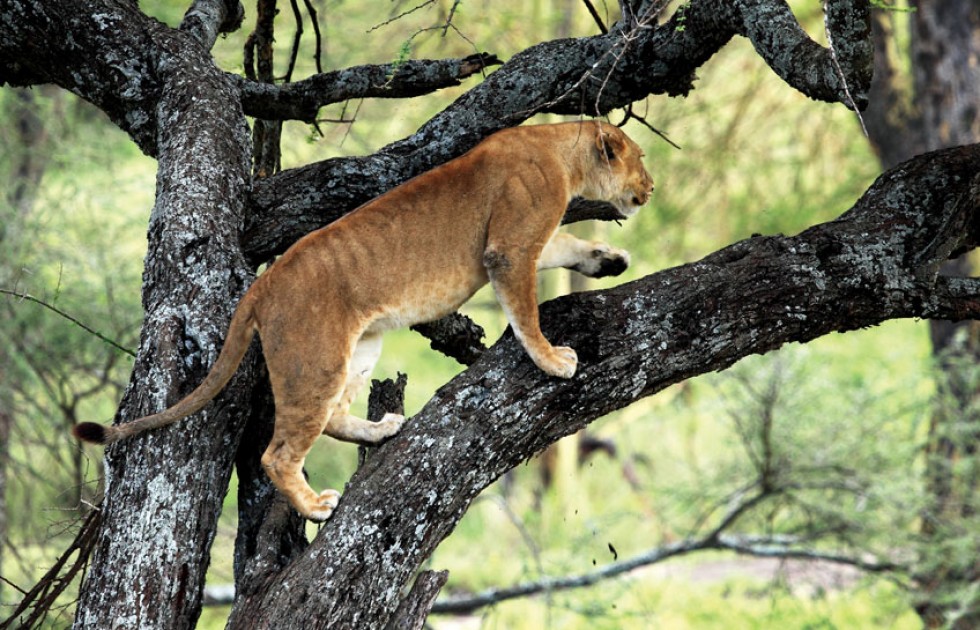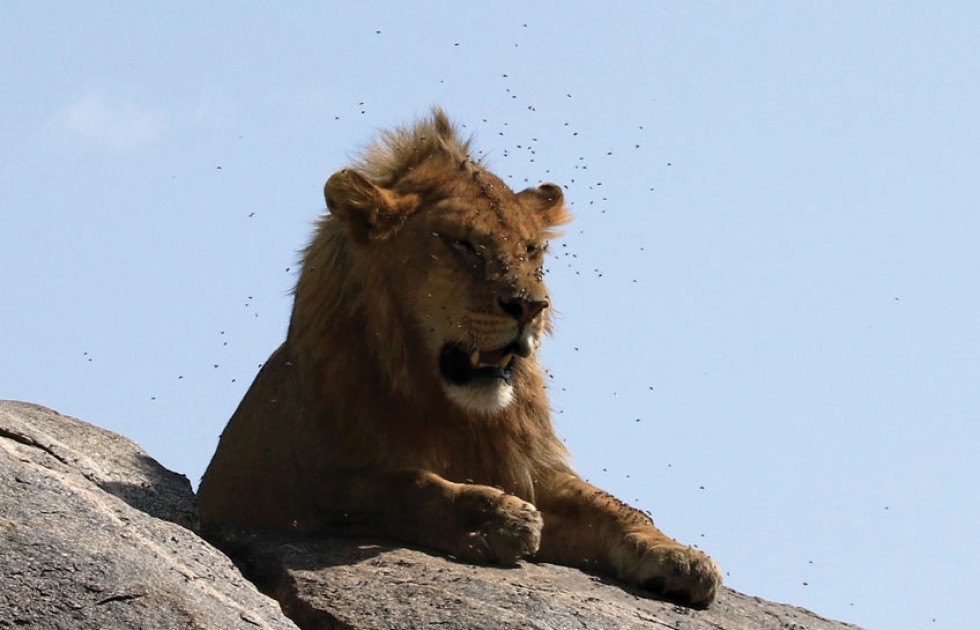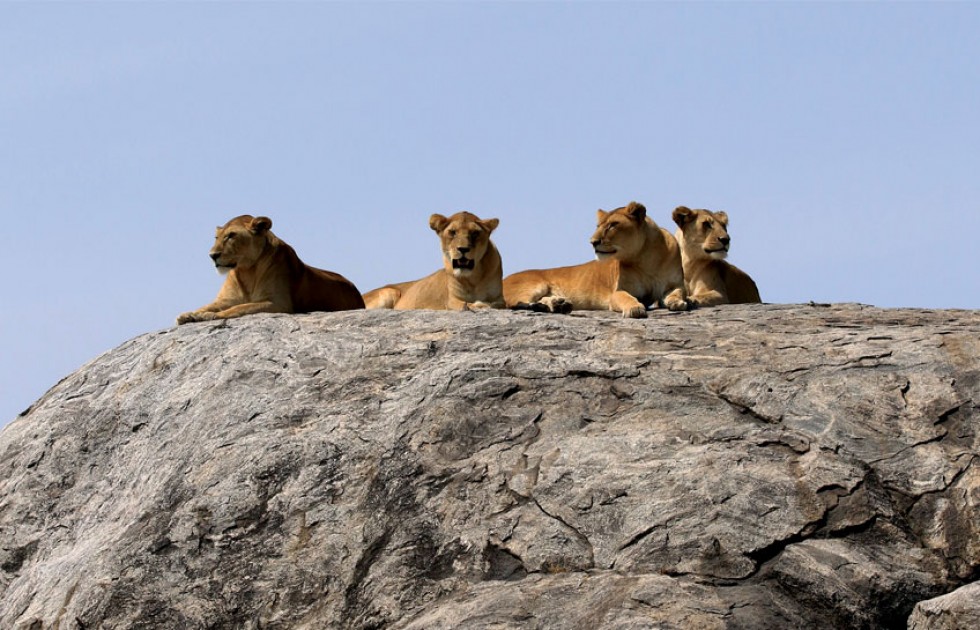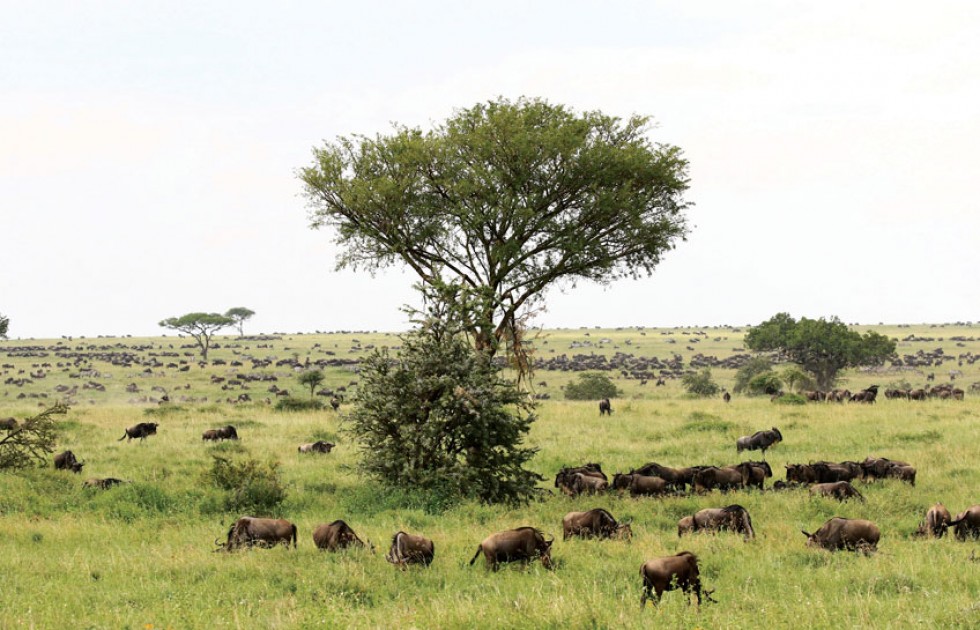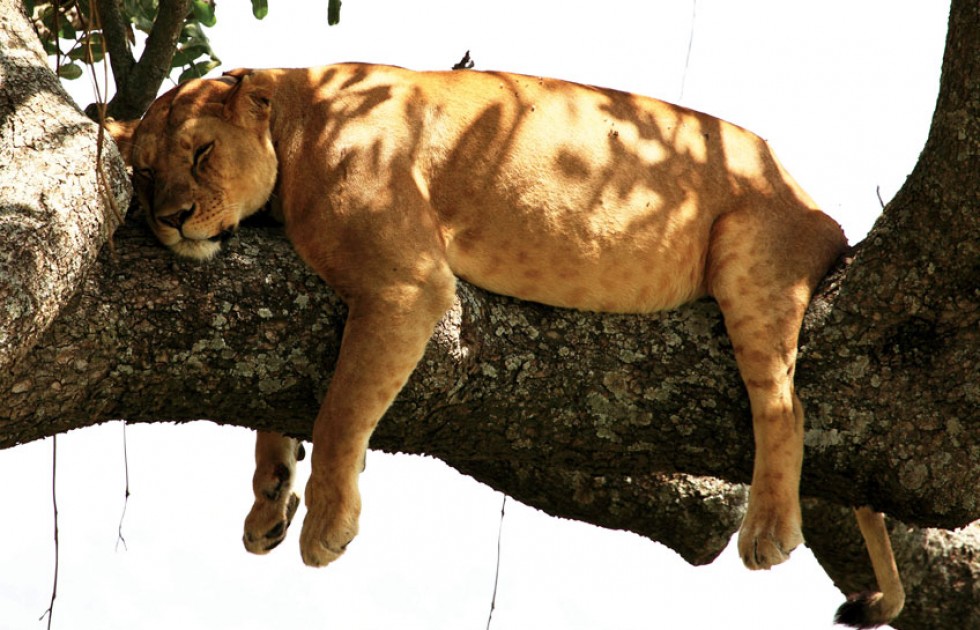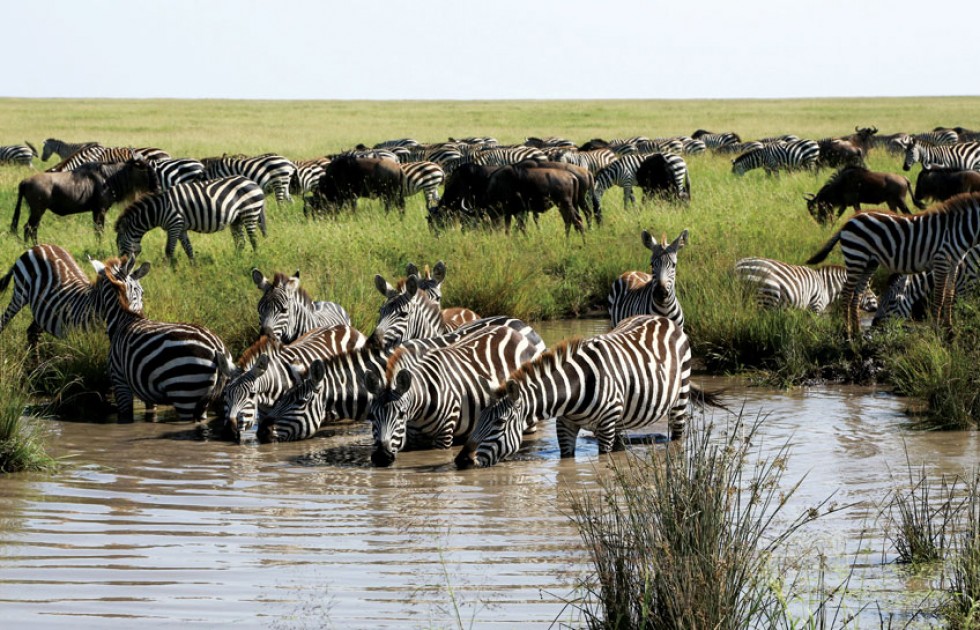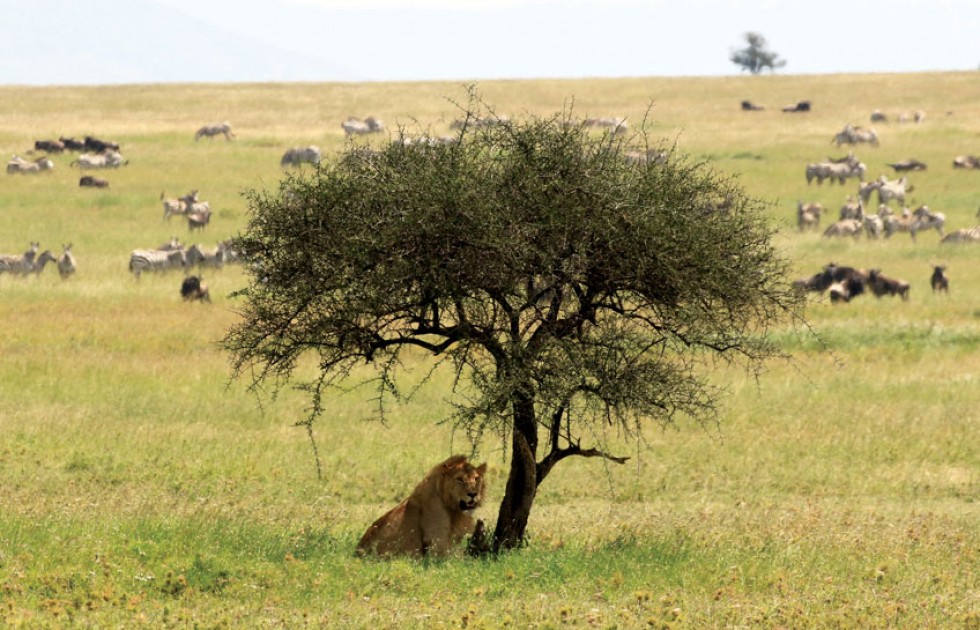THE LIONS OF SERENGETI
Serengeti National Park, inscribed as a UNESCO natural World Heritage Site in 1981, is located in northern Tanzania covering an area of 14,000 square kilometers. I’ve been to Serengeti 6 times, the last trip being in June 2015, and in my opinion it is one of the best African safari destinations. Serengeti’s biggest attraction is of course wildlife, including all the Big Five – elephant, lion, rhinoceros, buffalo, and leopard, and more than 2 million ungulates featuring the annual migration of 1.5 million wildebeests and 500,000 zebras from Serengeti to Masai Mara National Reserve in Kenya.
The first-time visitors to Serengeti would be surprised to see the plains covered with tall grass and often asked the guide why the wildebeests and the zebras migrate to search for grass when the plains are full with grass. The answer is that the wildebeests and the zebras prefer short grass and will migrate when the grass become taller. Another question that follows is what kind of animals would eat tall grass, and the answer is African wild buffalo. On my last trip to Serengeti I saw thousands and thousands of wildebeests and zebras in the grass plains, and two days later when I returned to the same area not one wildebeest or zebra was spotted. As I looked across the plains where the grass were getting taller, I saw in the far distance a dark long line of animals moving into the plains. When they came closer I was astonished to see that the long line comprised thousands of buffalo to graze on the tall grass.
The enormous number of wildebeests, zebras, and buffalo provides unlimited food sources for the predators of Serengeti, especially lions which prey mainly on those three species of ungulates. During the period of only six days in Serengeti, I saw more than 40 lions, which was much more than the number of lions I saw in any previous African safari. Lions were everywhere, but mostly near the migrating herds of wildebeests and zebras. I sighted a pride of lions with 19 members, the largest I’ve ever seen, comprising 3 males, 7 females, and 9 cubs.
Besides the migration, another major attraction of Serengeti is the sighting of lions in trees which is contrary to the general belief that lions could not climb tree. I saw several lions climbing up and down trees agilely and lying comfortably in trees just like a leopard. I counted 13 lions in one single tree. I was told the main reason lions went up in trees to flee from countless number of flies which accompanied the ungulates. Lions enjoyed lying on boulders under sunshine, but the annoyance caused by the flies forced them to seek refuge in trees as demonstrated by a few of my photos.
Serengeti can be visited all year round starting with the dry season in June to August following the herds of wildebeests and zebras to the border of Kenya where the ungulates spend three to four months. From September to November, the ungulates begin to migrate back to Serengeti when the short grass in the Masai Mara Plains have been depleted while the rainy season starts again in Serengeti bringing water and the fresh crops of short grass. From December to January, the ungulates move southward from the Kenyan border into the Serengeti Plains, and in February and March at least 400,000 calves were born on the plains in southern Serengeti. The calves could stand within three to five minutes after they were born. Two months later in May, the calves gain their strength and are ready for their first migration.


